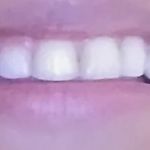Can a Tooth Infection Cause Eye Pain? Understanding the Link Between Dental Health and Eye Discomfort
- Understanding Tooth Infections and Their Impact on Eye Health
- How a Tooth Infection Can Lead to Eye Pain
- Symptoms and Signs to Watch for
- Real-Life Cases of Tooth Infections Causing Eye Pain
- Treatment and Prevention of Tooth Infection-Related Eye Pain
1. Understanding Tooth Infections and Their Impact on Eye Health
Tooth infections, also known as dental abscesses, occur when bacteria invade the root of a tooth or the surrounding tissues. While these infections are primarily confined to the mouth, they can sometimes cause unexpected side effects, such as eye pain. This is because the nerves in the head and face are all interconnected, and an infection in the teeth can affect areas far from the original source, including the eyes.
The connection between tooth infections and eye pain is often due to the proximity of the tooth roots to sensitive nerves that run near the eyes. In some cases, the infection can even spread to the eye area if left untreated, potentially leading to more severe complications. Understanding this connection is crucial for those experiencing unexplained eye discomfort alongside a dental infection.
2. How a Tooth Infection Can Lead to Eye Pain
The key reason a tooth infection might cause eye pain is the shared nerve pathways between the teeth, jaw, and eyes. The trigeminal nerve, which is responsible for sensation in the face, branches out to several areas, including the teeth and eyes. When a tooth becomes infected, the swelling and pressure in the surrounding tissues can irritate this nerve, potentially leading to discomfort or pain in the eye.
Additionally, if the infection worsens and spreads beyond the tooth into the jaw or sinuses, it can increase the pressure around the eyes, causing a dull ache or sharp pain. In severe cases, the infection may spread to other parts of the face or even cause a sinus infection, further contributing to eye discomfort.
3. Symptoms and Signs to Watch for
Recognizing the signs of a tooth infection and eye pain connection can help you seek timely treatment. If you experience any of the following symptoms, it's important to visit your dentist or healthcare provider as soon as possible:
- Pain in the Tooth and Jaw: A throbbing or persistent pain in the tooth or jaw area, especially accompanied by sensitivity to hot or cold, is a classic sign of a tooth infection.
- Swelling Around the Eyes or Cheeks: Swelling that extends from the mouth or jaw toward the eyes may indicate that the infection is affecting the surrounding tissues.
- Redness or Irritation Around the Eyes: If your eye area appears red or irritated alongside tooth pain, it could signal that the infection is affecting the nearby nerves or causing a secondary condition like conjunctivitis.
- Headaches: Intense headaches, especially in the temples or around the eyes, may result from the pressure created by an untreated dental infection.
4. Real-Life Cases of Tooth Infections Causing Eye Pain
One real-life case involved a woman named Lisa, who began experiencing persistent eye pain and a headache after developing a severe tooth infection. Initially, she thought her symptoms were unrelated to her dental health, but after consulting with her dentist, she discovered that the infection had spread to her sinuses, causing referred pain to her eye. After receiving antibiotics and dental treatment, her eye pain significantly decreased, and the infection was successfully managed.
Another example comes from Mark, who experienced a sharp, shooting pain in his right eye, which worsened over a few days. Upon visiting his dentist, he learned that an untreated cavity had turned into a full-blown infection that was irritating the trigeminal nerve and affecting his eye. Mark was promptly treated with antibiotics, and his symptoms improved within a few days.
5. Treatment and Prevention of Tooth Infection-Related Eye Pain
If you suspect that your eye pain is related to a tooth infection, seeking prompt treatment is essential. Your dentist will likely prescribe antibiotics to treat the infection and may need to drain any abscesses that have formed around the tooth. In some cases, more extensive dental procedures, such as a root canal or extraction, may be necessary to fully resolve the issue.
To prevent future tooth infections and associated complications like eye pain, maintaining good oral hygiene is crucial. Brush your teeth regularly, floss daily, and visit your dentist for routine checkups. If you experience tooth pain or sensitivity, don't delay in seeking dental care to avoid complications that could affect your overall health.
For more information on preventing and treating tooth infections, visit Dentistry Toothtruth, where we provide expert dental care and guidance for all your oral health needs.







 Alex W. Skaff DDS5.0 (5 review)
Alex W. Skaff DDS5.0 (5 review) Robert Niles5.0 (2 review)
Robert Niles5.0 (2 review) Sunanda Baliga, DDS, PHD0.0 (0 review)
Sunanda Baliga, DDS, PHD0.0 (0 review) Dr. May P. Chu, DDS5.0 (161 review)
Dr. May P. Chu, DDS5.0 (161 review) Malinowski & Sefcik5.0 (8 review)
Malinowski & Sefcik5.0 (8 review) Windmill Dental Care4.0 (9 review)
Windmill Dental Care4.0 (9 review) The Importance of Oral Health Education During Pregnancy for a Healthy Pregnancy
The Importance of Oral Health Education During Pregnancy for a Healthy Pregnancy Best Tips for Brushing Your Teeth Properly for Healthy Gums: Essential Techniques for Oral Health
Best Tips for Brushing Your Teeth Properly for Healthy Gums: Essential Techniques for Oral Health Why Skipping Dental Checkups Can Lead to Bigger Oral Health Problems
Why Skipping Dental Checkups Can Lead to Bigger Oral Health Problems Advantages of Porcelain Dental Restorations
Advantages of Porcelain Dental Restorations How Can Diabetes Cause Tooth and Gum Problems? Preventing and Managing Oral Health Issues
How Can Diabetes Cause Tooth and Gum Problems? Preventing and Managing Oral Health Issues Healthy Habits for Promoting Good Oral Health and Hygiene: Tips for a Healthy Smile
Healthy Habits for Promoting Good Oral Health and Hygiene: Tips for a Healthy Smile